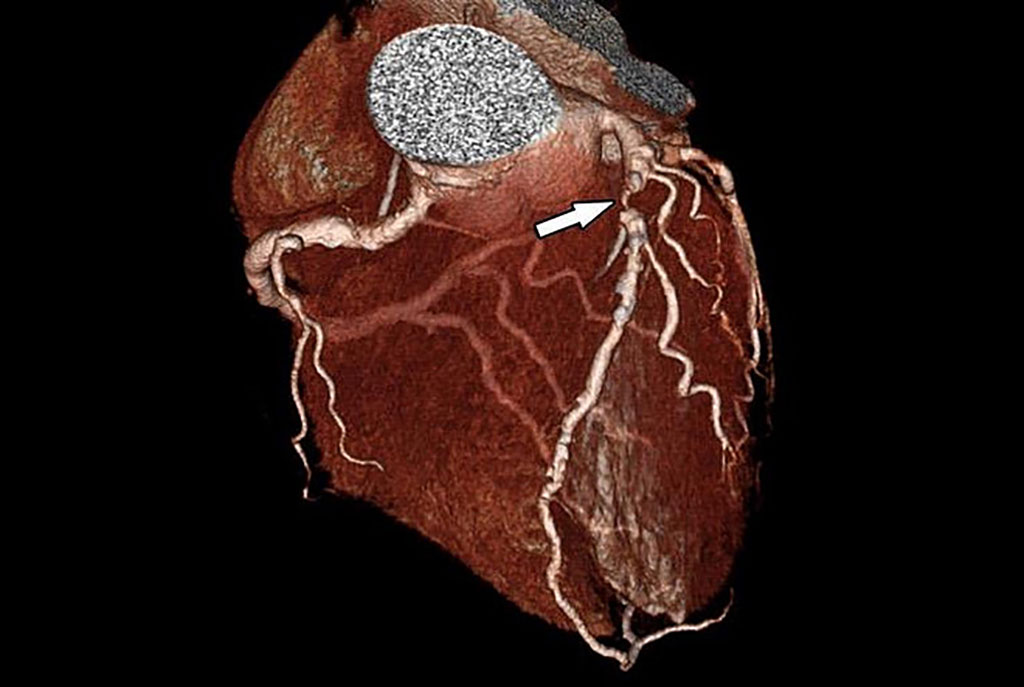CT as Accurate as Angiography in Detecting Coronary Artery Disease Non-Invasively
Posted on 07 Mar 2022
A study by researchers from 31 European clinical institutions suggests that cardiac computed tomography (CT) offers a similar level of diagnostic accuracy as catheterization in patients with suspected coronary artery disease (CAD), in addition to being associated with a lower risk of complications.
The study, led by researchers at Charité-Universitätsmedizin Berlin (Berlin, Germany), was a part of the DISCHARGE trial and aimed to test cardiac CT as a non-invasive alternative to catheterization, the current standard diagnostic test for intermediate-risk patients. CAD is common across the globe and is one of the leading causes of death in developed countries and aging populations. The disease is associated with impaired blood flow in the coronary arteries, i.e., the arteries which supply oxygen to the heart. Chest pain, shortness of breath and fatigue with activity can all be indicators of either chronic or acute disease, both of which are associated with an increased risk of heart attack, stroke and even cardiovascular death - examples of what are referred to ‘major adverse cardiovascular events’. Symptoms of CAD are caused by deposits inside the artery walls which build up over many years.

The current standard diagnostic test for coronary artery disease is a minimally invasive procedure known as coronary angiography (or cardiac catheterization). This test shows if the coronary arteries supply a sufficient amount of blood or whether blood flow is impaired by arterial narrowing. Any narrowing detected in this manner can be treated during the procedure itself, through the use of small, inflatable balloons and extremely thin mesh tubes known as stents, which are used to prop open the newly widened blood vessels. More than 3.5 million of these procedures are carried out in European catheterization laboratories (or cath labs) every year, and numbers continue to increase. Approximately two million – i.e., significantly more than half – of these minimally invasive procedures do not involve immediate treatment in the cath lab. In these cases, the procedure is able to rule out narrowed or blocked coronary arteries.
The main question addressed by the DISCHARGE trial was whether the low-risk, non-invasive coronary CT method can provide a safe alternative to catheterization in certain patients with suspected CAD. In order to test the effectiveness of both of these diagnostic imaging techniques in patients with stable chest pain, the project followed more than 3,500 patients for a duration of four years. Using a process known as randomization, patients were assigned by chance to either computed tomography or cardiac catheterization. If their initial evaluation ruled out obstructive coronary artery disease, participants were discharged back to their referring physician for further treatment – a step which gave the trial its name: DISCHARGE. Patients who were diagnosed as having the disease were managed in accordance with European guidelines at the time of the study.
For their overall analysis, the researchers also included criteria such as improvements in chest pain and quality of life over the course of the trial. By helping to reduce the large number of catheterization procedures being performed, this new strategy could also help relieve pressure on health care systems. The Federal Joint Committee (G-BA) has initiated a formal assessment to evaluate the benefits of cardiac CT. As a next step, the trial’s method for estimating a person’s clinical risk of having coronary artery disease will need to be further evaluated to determine whether it can help to improve routine care.
“The trial confirmed that a CT-based management is safe in patients with stable (i.e., non-acute) chest pain and suspected coronary artery disease,” said Prof. Dr. Marc Dewey, Vice Chair of the Department of Radiology on Campus Charité Mitte. “Among the patients referred for cardiac catheterization and included in this trial, the risk of major adverse cardiovascular events was found to be similar in both the CT and catheterization groups, occurring in 2.1% and 3.0% of patients, respectively. The incidence of major procedure-related complications was found to be four-times lower in patients managed with an initial CT strategy.”
“CT may represent a safe alternative to cardiac catheterization in specific patients. In patients with a low risk of CAD diagnosis, CT can help prevent an unnecessary catheterization procedure,” said Prof. Dr. Henryk Dreger, Deputy Head of Charité’s Department of Cardiology and Angiology, who was responsible for monitoring the catheterization lab procedures performed at Charité. “Now that CT has been standardized and quality-tested as part of the DISCHARGE trial, this method could be made more widely available as part of the routine clinical care of people with intermediate CAD risk.”
Related Links:
Charité-Universitätsmedizin Berlin














